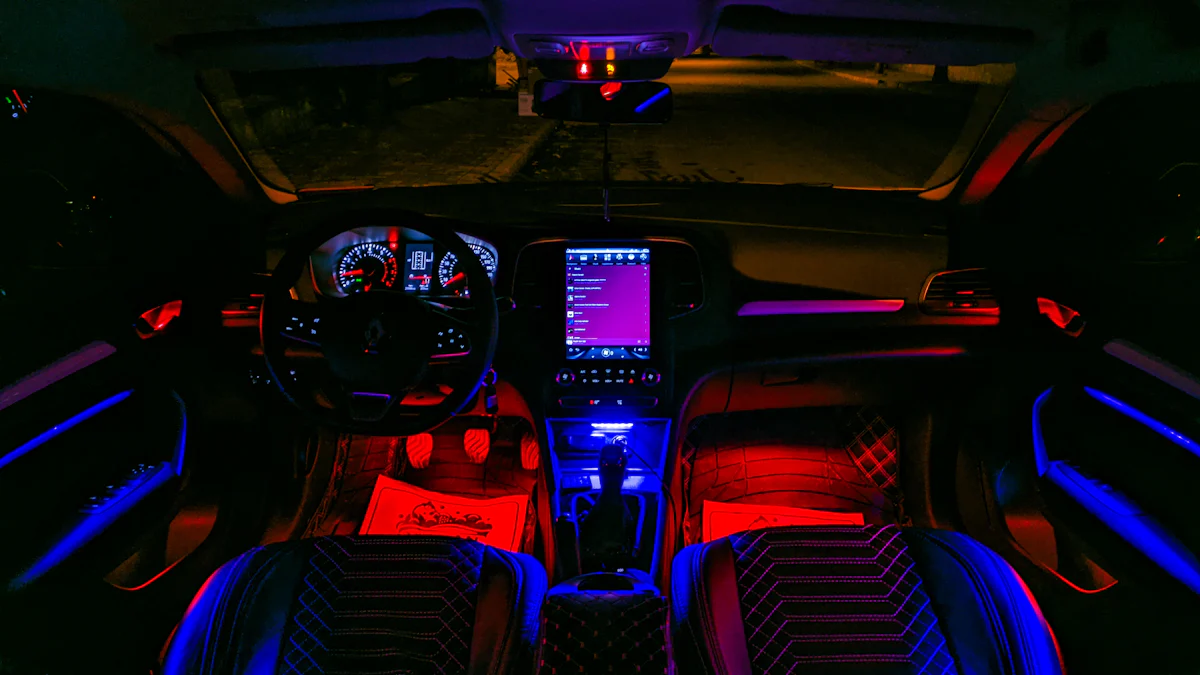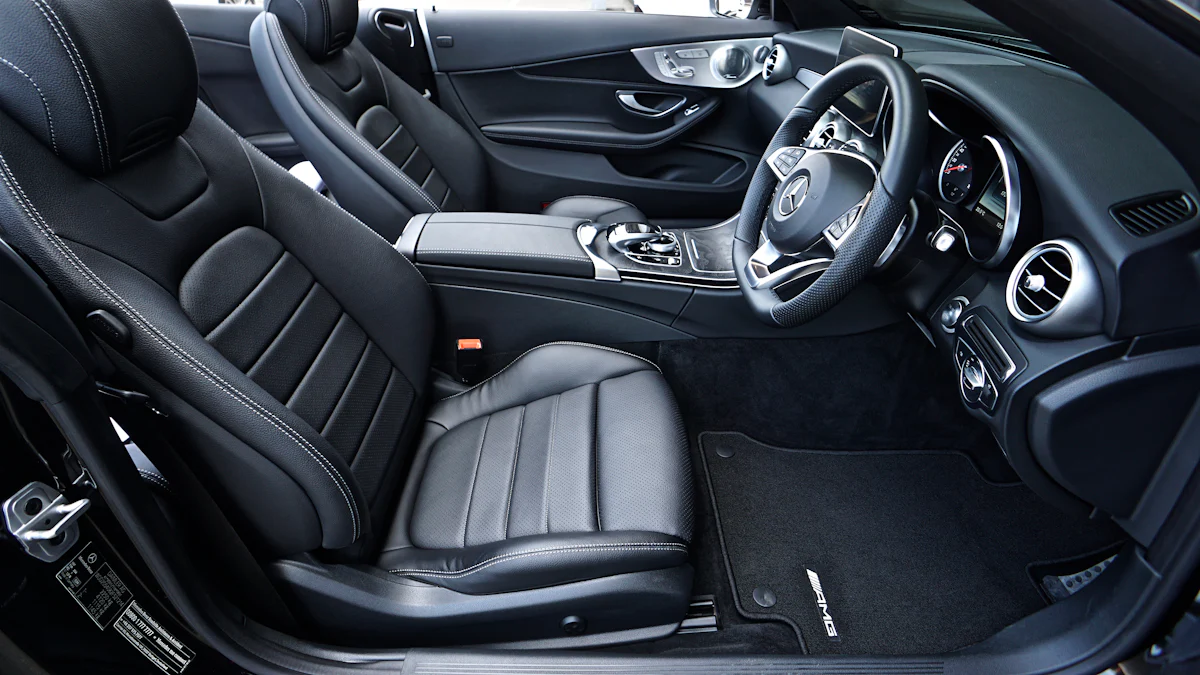Automotive interior trim plays a crucial role in defining the overall aesthetic and comfort of a vehicle. The rapid progression of technology in the automotive industry has elevated the driving experience to new heights. Innovations such as in-cabin monitoring and smart surfaces are transforming car interiors into intelligent, user-friendly spaces. The seamless integration of technology ensures that drivers and passengers enjoy a blend of functionality and luxury. With 71 percent of automotive executives emphasizing the growing importance of vehicle interiors, the future looks bright for advancements in this field.
The concept of smart automotive interiors is driven by the increasing demand for connectivity, safety, and comfort. Modern consumers expect their vehicles to be extensions of their digital lives, offering the same level of technological sophistication they experience at home and in their personal devices. This expectation is pushing automakers to innovate and incorporate smart technologies directly into the interior trims of their vehicles.
Evolution of Automotive Interior Trims
Traditional Materials and Designs
Leather and Fabric
Leather dominated early automotive interiors. Luxury vehicles showcased rich, supple leather seats. Fabric also played a significant role. Manufacturers used durable and comfortable materials. Both leather and fabric provided elegance and comfort.
Wood and Metal Accents
Wood accents added a touch of class. High-end models featured polished wood trims. Metal accents offered a modern feel. Chrome and brushed aluminum became popular choices. These materials enhanced the visual appeal of car interiors.
Transition to Modern Materials
Synthetic and Composite Materials
Synthetic materials revolutionized car interiors. Manufacturers adopted vinyl and plastics. These materials offered durability and cost-effectiveness. Composite materials combined strength and lightweight properties. Carbon fiber emerged as a favorite for sports cars.
Eco-friendly and Sustainable Options
Sustainability gained importance. Recycled materials entered the scene. Car interiors featured eco-friendly fabrics and trims. Intelligent lighting solutions improved energy efficiency. Stone and other natural materials enhanced decorative value. The shift towards green options reflected environmental consciousness.
Technological Innovations in Automotive Interior Trim

Smart Surfaces and Displays
Touch-sensitive Panels
Touch-sensitive panels have revolutionized automotive interior trim. These panels respond to the slightest touch, providing an intuitive interface for drivers. The sleek design eliminates the need for physical buttons, creating a clean and modern look. Manufacturers integrate these panels into dashboards, steering wheels, and even door panels. This innovation enhances both functionality and aesthetics.
Integrated Infotainment Systems
Integrated infotainment systems offer a seamless blend of entertainment and information. These systems feature large, high-resolution screens that display navigation, music, and vehicle diagnostics. Voice control and gesture recognition add to the user-friendly experience. Automakers design these systems to keep drivers connected without compromising safety. The integration of smart technology into automotive interior trim transforms the driving experience.
Advanced Lighting Solutions
Ambient Lighting
Ambient lighting creates a soothing atmosphere inside the vehicle. LED lights can change color and intensity based on the driver’s preference. This feature enhances the overall aesthetic and provides a sense of luxury. Automakers use ambient lighting to highlight key areas such as footwells, door panels, and dashboards. The result is a visually appealing and comfortable environment.
Adaptive Lighting Technologies
Adaptive lighting technologies adjust based on driving conditions. These systems include headlights that change direction with the steering wheel and interior lights that dim automatically. This technology improves visibility and reduces driver fatigue. Automakers incorporate adaptive lighting into automotive interior trim to enhance safety and comfort. The combination of smart lighting solutions elevates the driving experience.
Connectivity and IoT Integration
In-car Wi-Fi and Bluetooth
In-car Wi-Fi and Bluetooth connectivity keep drivers and passengers connected. These features allow for seamless streaming of music, navigation, and communication. Automakers integrate these technologies into the vehicle’s infotainment system. This connectivity transforms the car into a mobile hotspot, enhancing convenience and entertainment. The integration of IoT technology into automotive interior trim ensures a connected driving experience.
Smart Device Integration
Smart device integration allows drivers to connect smartphones and wearables to the vehicle. This feature enables hands-free calling, texting, and app usage. Automakers design interfaces that mirror smartphone screens on the infotainment display. This integration enhances safety by reducing distractions. The seamless connection between smart devices and automotive interior trim creates a cohesive and user-friendly environment.
Enhancing User Experience

Ergonomics and Comfort
Adjustable Seating and Climate Control
Automakers prioritize adjustable seating to enhance driver and passenger comfort. Seats now come with multiple adjustment options, including lumbar support and memory settings. These features ensure that every individual finds the perfect seating position. Climate control systems have also evolved. Dual-zone and tri-zone climate controls allow for personalized temperature settings. This innovation creates a comfortable environment for all occupants.
Noise Reduction Technologies
Noise reduction technologies play a crucial role in improving the driving experience. Manufacturers use advanced materials and engineering techniques to minimize road and engine noise. Acoustic glass and sound-deadening materials create a quieter cabin. This focus on noise reduction enhances comfort and allows for a more enjoyable ride.
Safety and Assistance Features
Driver Assistance Systems
Driver assistance systems have become a staple in modern vehicles. These systems include adaptive cruise control, lane-keeping assist, and automatic emergency braking. Sensors and cameras monitor the surroundings and provide real-time feedback. This technology helps prevent accidents and ensures a safer driving experience.
Emergency Response Technologies
Emergency response technologies add an extra layer of safety. Features like automatic crash notification and SOS buttons connect drivers to emergency services. In the event of an accident, these systems can automatically alert authorities and provide the vehicle’s location. This quick response can save lives and reduce the severity of injuries.
Recent advancements in smart automotive interior trims have revolutionized vehicle design. Smart surfaces, touch-sensitive panels, and integrated infotainment systems enhance both functionality and aesthetics. Seamless technology integration transforms the driving experience into a blend of luxury and convenience.
The future holds immense potential for automotive interiors. Innovations in connectivity, HMI, and sustainable materials will continue to shape the industry. Expect more homelike features, automated assistants, and eco-friendly options.
Staying updated with these developments ensures an informed perspective on the evolving landscape of automotive interiors.
The advancements in smart automotive interior trims are transforming the way we interact with our vehicles. By integrating cutting-edge technologies seamlessly into the interior design, automakers are enhancing the overall driving experience, making it more intuitive, comfortable, and connected. As these technologies continue to evolve, we can expect even greater innovations that will redefine the future of automotive interiors.
Post time: Aug-01-2024



